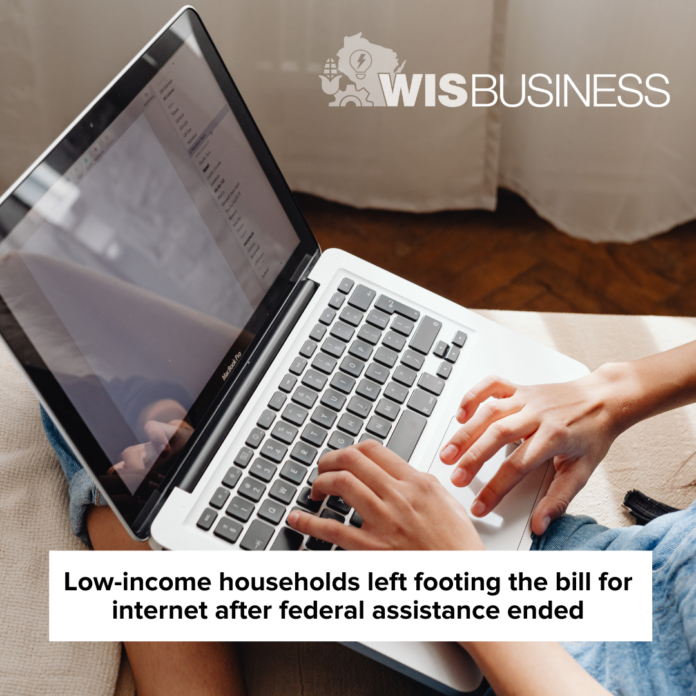Many low-income households in Wisconsin were likely left footing the bill for internet services after federal funding ran out last year for the Affordable Connectivity Program.
That’s according to Drew Garner, director of policy engagement with the Benton Institute for Broadband and Society in Illinois. He spoke yesterday during a meeting of the Governor’s Task Force on Broadband Access, where he pointed to affordability issues as a main barrier to broadband adoption.
Similarly, access to broadband internet is “heavily correlated” with economic prosperity and better health, Garner said.
“When broadband is available, it increases entrepreneurship and business revenue,” he said. “Health outcomes get better … health care costs decline, because the more you can take advantage of telehealth services, the less you have to rely on an ambulance to drive you from a rural area to a hospital.”
He referenced these trends to underline the impact of the ACP, a three-year federal program that helped eligible households afford internet access and connected devices. Before it ended last year due to a lack of congressional funding, more than one in six Wisconsin households were enrolled in the program, in line with the national trend.
Most participants that qualified for the program did so because they were already on other government assistance programs, including Medicaid, food stamps and a more limited internet assistance program called Lifeline. That means many of the ACP enrollees were low-income households, Garner explained.
When active, the ACP provided a discount of up to $30 per month toward internet service and up to $75 per month for households on qualifying tribal lands. Qualifying households could also get a one-time credit of $100 toward buying a laptop, desktop computer or tablet from participating companies, as long as they contributed between $10 and $50 toward the purchase.
When the program ran out of funding and ended in June 2024, one out of six households “were hit with a bill spike, pretty much all at once,” Garner said.
“A lot of these people, very low-income people, were on the hook for a service that the government had effectively promised to help them afford, but then that benefit was taken away and those households were then responsible for the bill that became due,” he said.
While Garner said “it’s not yet clear” how many people will go into debt as a result, he noted telecommunications services — including broadband — is one of the top three causes of consumer debit in the United States.
“Unpaid bills go into collections, people fall into debt, it hurts their credit score,” he said, tying these results to the end of the ACP benefits.
He called the program’s end “a little bit tragic,” referencing multiple studies that found the economic benefits of the ACP more than paid for the cost of the program.
“All the savings to Medicaid for using telehealth, all the better employment benefits, people making higher income … savings to government programs, those all add up to more than $14 billion, the cost of the ACP,” he said.
At the national level, of the 23 million households enrolled in the program, 4 million were newly connected with the internet through the ACP and another 11 million with “intermittent” connectivity were kept online thanks to the program.
“So a total of 15 million people were effectively brought and kept online thanks to the ACP,” he said. “Based on these other numbers, a lot of them are probably struggling to afford connectivity.”
See more on the program ending here.






